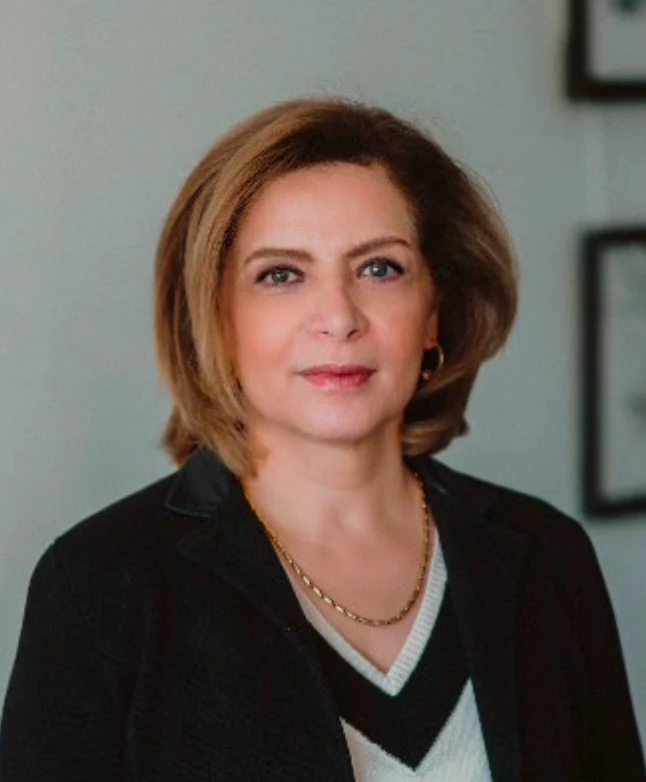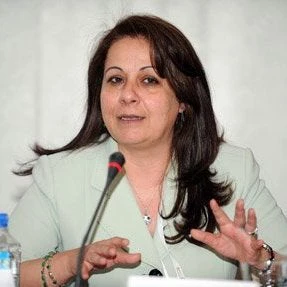 A female doctor smiles at a woman and her young child.
A female doctor smiles at a woman and her young child.
Gender equality and women empowerment are not mere slogans, nor is International Women’s Day simply an occasion to celebrate success and highlight challenges. It is an opportunity to reaffirm that investing in women and girls is the right and smart thing to do, allowing countries to reap the significant benefits of the so-called “gender dividend.”
The "gender dividend" refers to the economic benefits that can be gained from achieving gender equality and empowering women in various aspects of society, including education, workforce participation, entrepreneurship, and leadership. To get there, we must start at the very beginning.
Every two minutes, a woman dies from pregnancy or childbirth. That tragedy is made all the more painful when we realize that many of these deaths could have been avoided. What’s more, we know that when a mother survives, her child thrives. Children, whose mothers are alive and are actively involved, are more likely to live through their first birthday, have better health and nutrition, and go to school. This is especially true for young girls.
Yet, maternal mortality is one of the leading causes of death among 15-19-year-olds globally. On average, MENA has seen a decline in adolescent fertility since 2010. This decline has been driven by advances in some countries such as Tunisia and Algeria (7 and 12 births per 1000 adolescents respectively). But in other countries, such as Iraq and Yemen, adolescent fertility remains high with 62 and 54 births per 1000 adolescents respectively, mainly driven by early marriage and a lack of available contraception.
While the region as a whole has made significant strides in improving women and girls’ health, much more needs to be done. This is particularly true in a region experiencing increasing conflicts and fragility. Understanding the distinct impact of conflict on women and girls is critical for designing both preventive measures and rebuilding efforts that prioritize gender equality and protection. For example, in Yemen, conflict and fragility have contributed to disruption of services and displaced populations, further hindering access to already limited healthcare.
Education is a protective factor for women and girls’ health. Yet, only 29% of countries around the world have achieved education gender parity at the upper secondary level. While several MENA countries such as Bahrain, Jordan, and Saudi Arabia are on this list, where data is available, they indicate a decline in enrollment from lower to upper secondary. For example, in Djibouti, enrollment falls from 52 to from a low of 34% (32% for females); in Jordan it drops from 74% to 63% (65% for female); and in Egypt it goes from 95% to just under 75% (73% for females).
At the same time, very few women enter the labor markets in MENA with a shocking 18.8% labor force participation rate. Tradition and norms hold strong about women’s roles as mothers and caregivers, which leave little room for many to engage in formal work. However, this does not mean that they do not work – it is simply informal and unpaid. This puts them at greater risk of economic vulnerability and consequently in a weaker position to advocate for their health.
In order for us to leverage the gender dividend, we must work across sectors and issues:
-
Education: Education for girls and women not only increases their skills, knowledge, and life opportunities, but also has multiplier effects across generations.
-
Job Creation: By investing in women's entrepreneurship and workforce participation, economies can unlock their full potential and drive innovation, productivity, and competitiveness.
-
Legal and Policy Reform: Laws and policies that protect women's rights and promote gender equality, such as against gender-based violence or discrimination in labor markets, or that ensure equal access to justice and legal representation for women are essential.
-
Women’s Leadership: Developing women's leadership programs to build their capacity, and implementing gender quotas or other affirmative action measures are important to encourage women’s participation in politics and decision-making roles in the private sector.
-
Peace and Stability: Women's participation in peacebuilding, conflict resolution, and decision-making processes is essential for building more resilient, stable, and peaceful societies.
Often, gender equality and women’s empowerment are given a lower priority than other economic and social issues. But this is short-sighted. It is beyond time that investing in women and girls is recognized to be at the core of development.



Join the Conversation